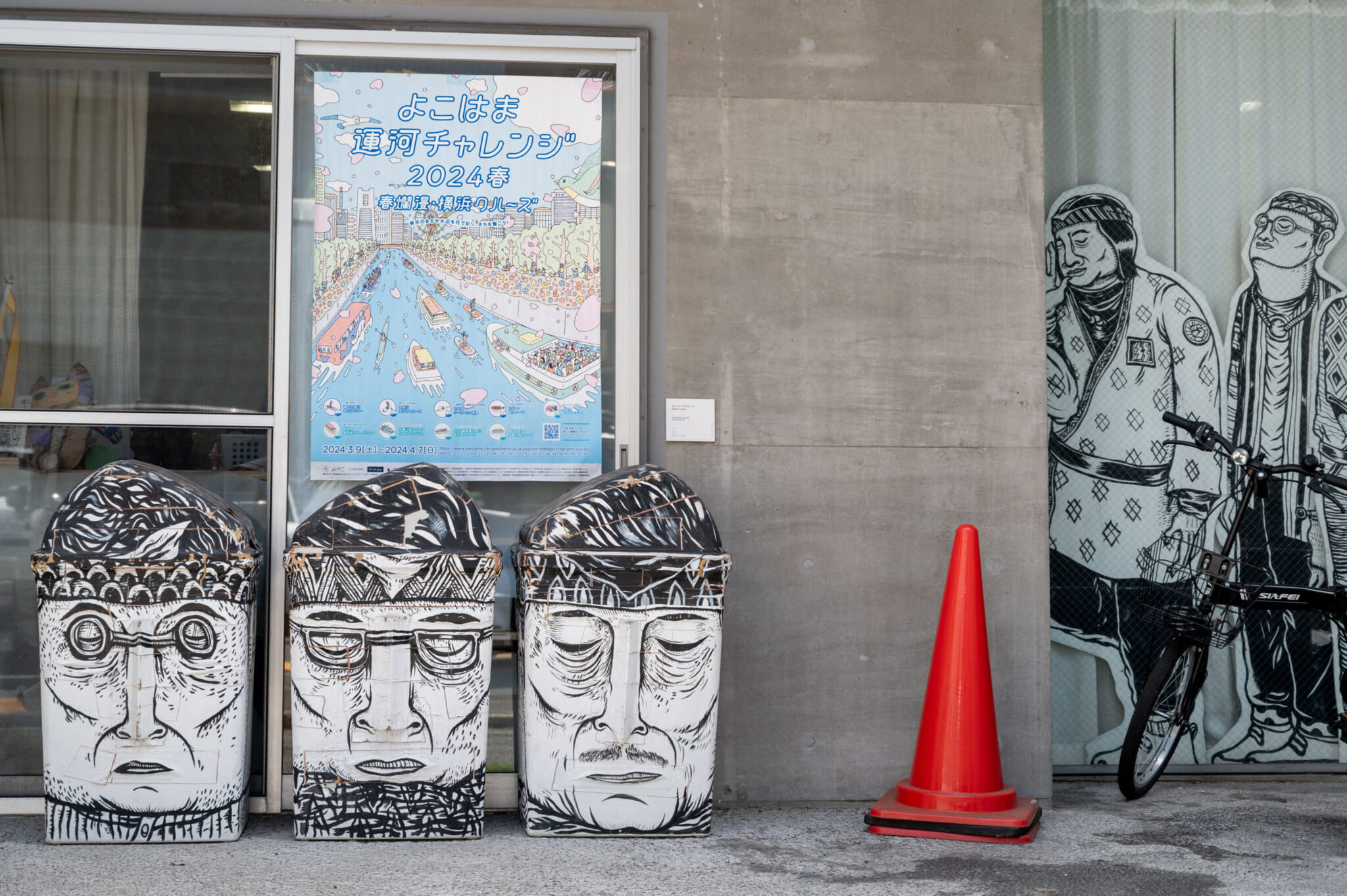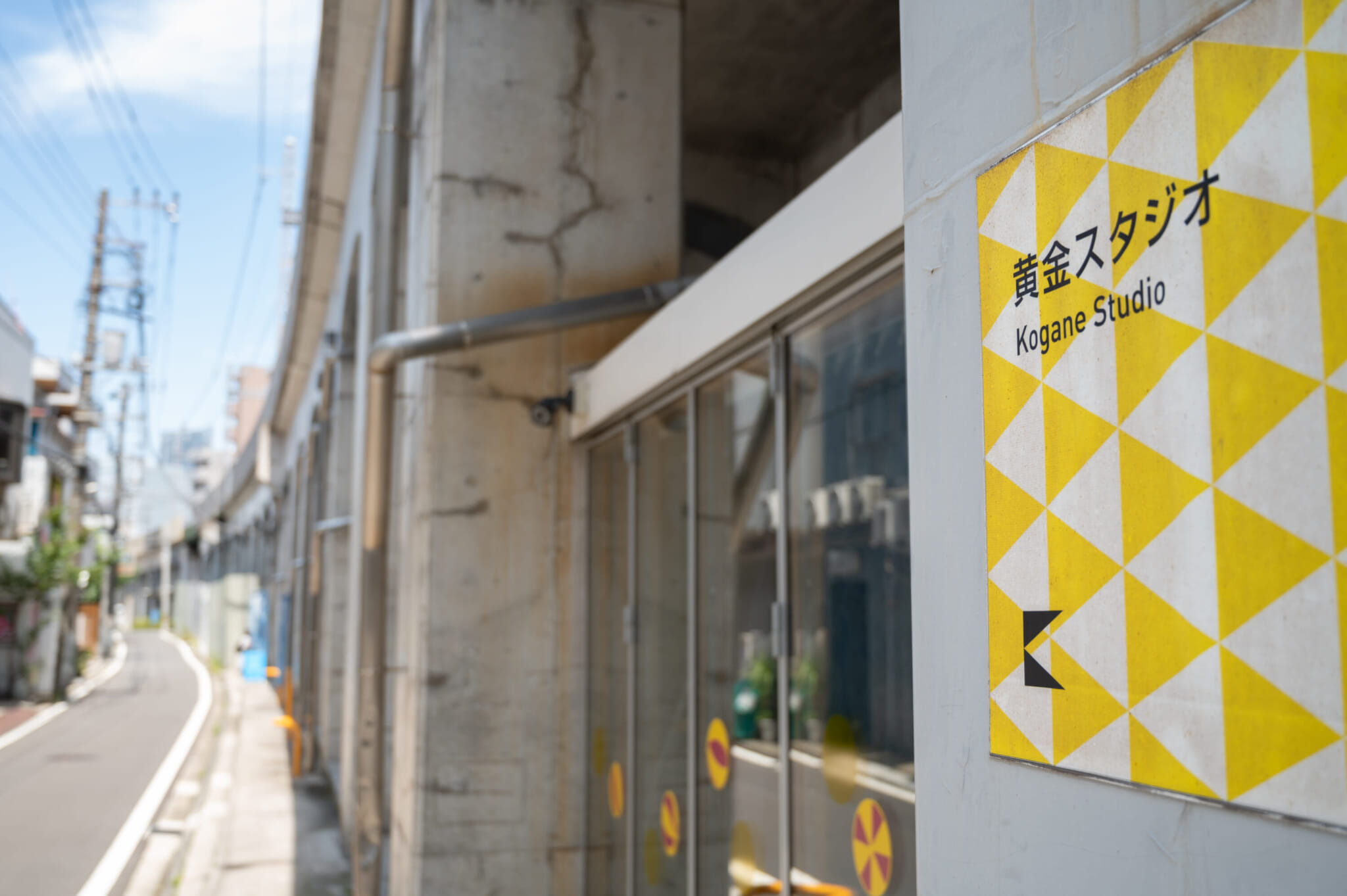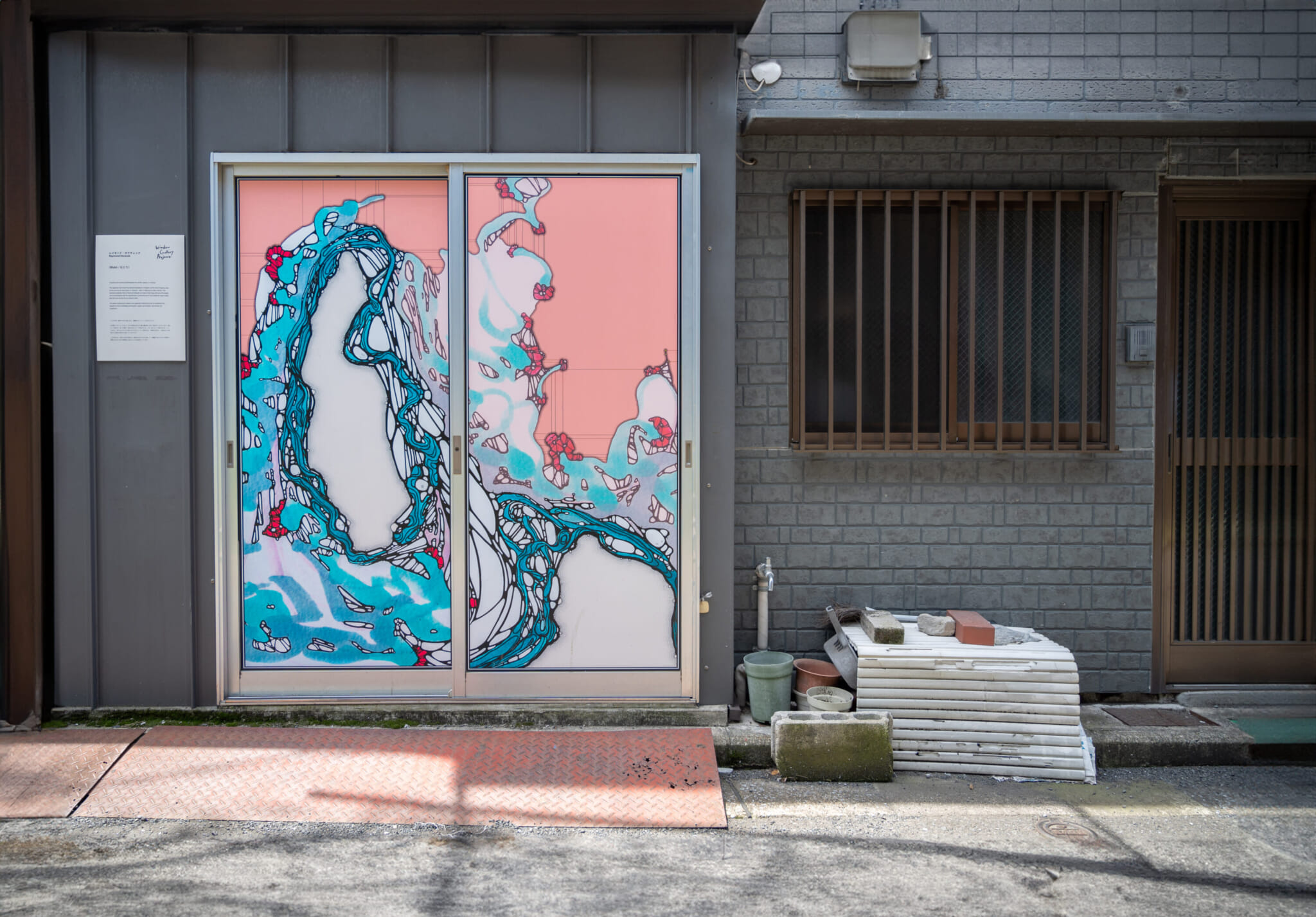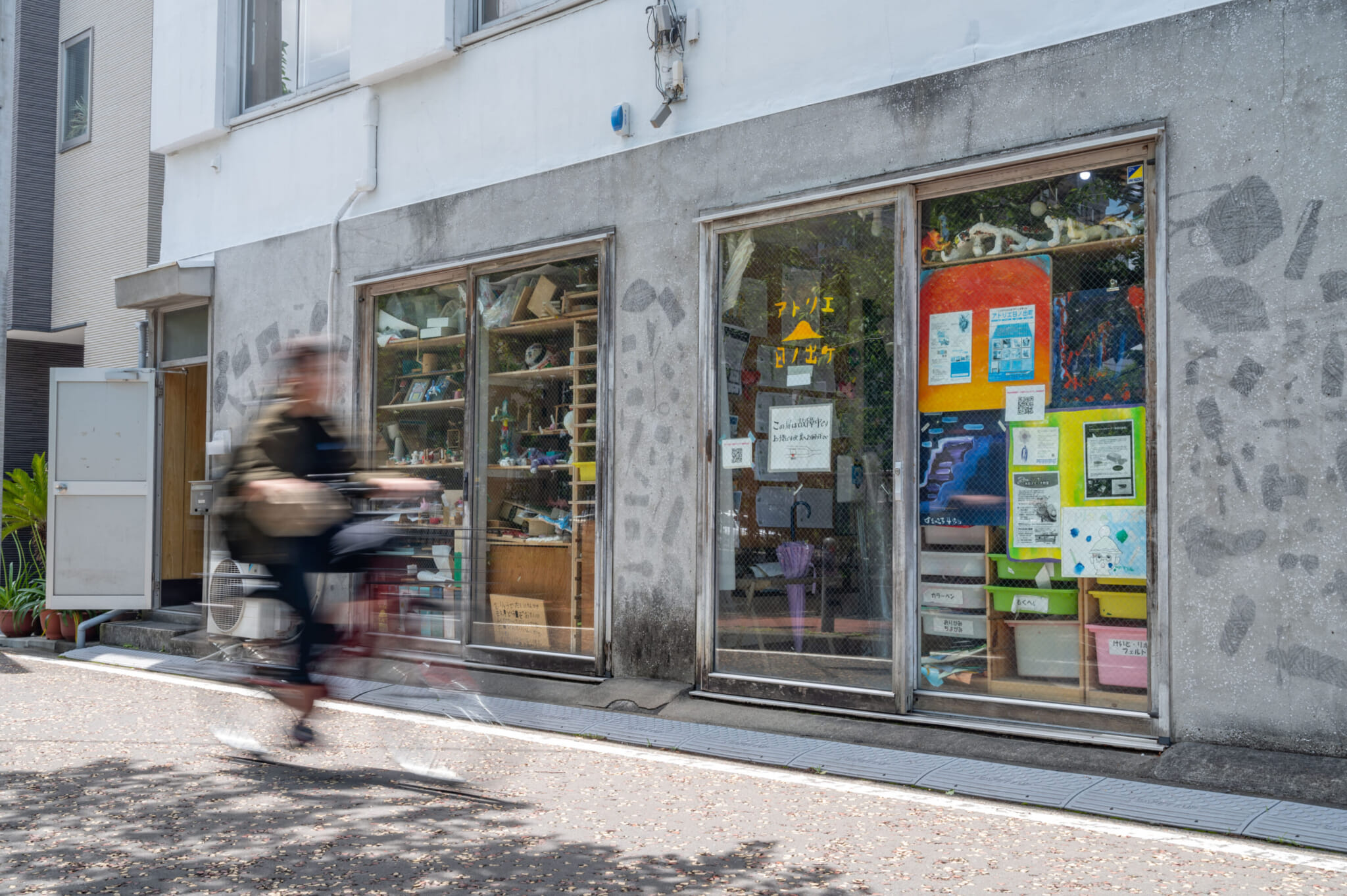This article appeared in Made in Japan Vol. 4.
To read the entire issue, click here.
Akira Kurosawa’s 1963 movie High and Low, known in Japanese as Tengoku to Jigoku (“Heaven and Hell”), was based on a real place; Yokohama’s notorious red-light district, Koganecho, was the conceptual reference for hell. The area was completely leveled in World War II, and a thriving black market emerged in its ruins. Until the mid-2000s, it was known as a hot spot for brothels, drugs and gang activity. The Koganecho depicted by Kurosawa was a definitive slum, ramshackle buildings sticking out like broken teeth amid dirt piled around and rubbish strewn across the floor.
Now, though, the neighborhood is unrecognizable: It’s a bright, bustling art hub, with fresh wooden flooring beneath the elevated train tracks, sleek gray concrete buildings, an artbook shop and numerous galleries. That’s due, in part, to the efforts of the Koganecho Area Management Center (KAMC), which began its work around 15 years ago.
A Sprawling Red Light District
The reimagining of Koganecho started in 2005, in the months leading up to Yokohama’s 150th anniversary. Fearing that the district’s reputation might sully the image of the entire city, police launched “Operation Bye Bye,” which targeted the hundreds of tiny brothels in the neighborhood, forcibly shutting them down. But this created another challenge: For decades, the local economy was propped up by illegal and underground trades. With the lights of Kanto’s largest red-light district extinguished, what would take their place?
The city of Yokohama’s solution was to transform the area into an enclave for artists. Doing so necessitated changing the neighborhood’s reputation and restoring residents’ trust in their surroundings — no easy feat. The Koganecho district is long and narrow, sandwiched by the Keikyu Railway Line and the Ooka River. The space under and around the elevated train tracks was historically known for housing myriad tiny brothels that masqueraded as bars, though those illegal establishments spread out and proliferated over the years, eventually numbering around 250 before the police raids left them temporarily empty and abandoned.

Injecting Art Into the Neighborhood
KAMC’s current director, Shingo Yamano, started work in the area in 2007. In his conversations with residents, the area under the train lines repeatedly came up as a topic of concern. “We consulted with locals and listened to their requests,” he says. “They wanted space to pass through under the tracks, and big, spacious windows.”
In 2008, two new art facilities were unveiled — both of them built under the railway, demarcating each end of the Koganecho area. Yamano points them out on a map: The northern building, Hinode Studio, is close to Hinodecho Station. Kogane Studio lies to the south, near to Koganecho Station. Each is built to house artists in residence, one of the main ways Yamano endeavored to make art a permanent fixture in Koganecho.
Typically, artist residencies tend to last for up to three months. In the Koganecho program, they’re much longer — residency periods start at three months and last up to one year, with many artists choosing to extend up to five years. “This is important to create community,” Yamano says. “The longer the artists are here, the more they can help foster relationships with the local residents.”

These studio spaces were launched in conjunction with the opening ceremony of the first-ever Koganecho Bazaar. A roughly three-month-long festival focused on the ways in which art and community interact with each other, the bazaar has now been running for a decade and a half. At the time, though, its success was far from guaranteed. Yamano strived to make the event feel inviting and accessible to the broader public, with every venue offering admission to all members of the public, free of charge. He persuaded café owners to open temporary shops, convinced artists to create portraits of residents and even got Issey Miyake to open a temporary store.
In 2009, building on the event’s success, the Koganecho Area Management Center was officially established as a non-profit.
Beyond the Bazaar
Yamano has worked hard to attract artists, not just from Japan but from other Asian countries, too. In 2023, 29 different artists took part in the residence program. The effects are easily apparent — the population of Koganecho and its surrounding areas has grown by 52% since 2004.
Yamano says that there are still residents who warn their children away from the area, and there are others who won’t attend the events. Despite this, it’s hard to dispute Koganecho’s success in remaking itself into a local art hub. During the annual bazaar festival, many buildings display little blue flags indicating that they’re exhibition venues, and it takes at least half a day to make one’s way around the show properly.

Once visitors have finished heading around the area, there are various post-exhibition options, from a newly built food hall at Hinodecho Station to the KAMC-run café, Clumsy Cafe, and the Koganecho Artbook Bazaar, a well-stocked artbook shop selling volumes that cover a variety of subjects, including art, design architecture and more.
In 2024, the bazaar celebrated its 15th year, in a sprawling event spread over 20 different venues. But it’s not just around bazaar days that the place is bustling. There are markets, workshops, events and exhibitions all year round. Koganecho has finally become a destination to visit, rather than an area to stay away from. I wonder what Kurosawa would say.
For more info about Koganecho and its upcoming exhibitions, visit their website.









